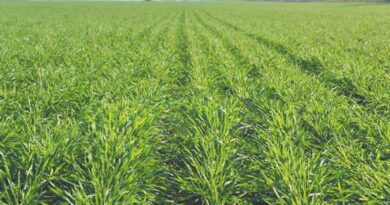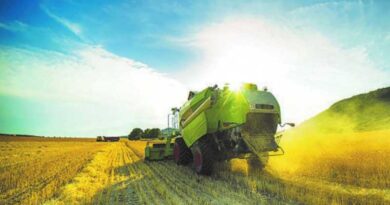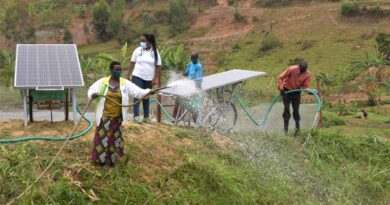Pig prices are expected to rebound slightly before the year, farmers need to adjust the rhythm of slaughtering
27 November 2023, China: According to monitoring by the Ministry of Agriculture and Rural Affairs, the number of pigs slaughtered increased significantly in late October, and pig prices experienced a rapid downward trend, but have recently stabilized. At present, the number of breeding sows in the country is still higher than the reasonable level, the number of medium and large pigs is still increasing, and the pig production capacity is generally sufficient. It is expected that as the south gradually enters the peak season for curing pork, coupled with consumption during the New Year’s Day and Spring Festival holidays, pig prices will stabilize and rebound, and pig breeding is expected to become profitable.
Market supply continues to increase and pig prices fall. According to monitoring, the slaughter volume of pig slaughtering enterprises above designated size across the country has increased week by week since October, of which 5.103 million pigs were slaughtered in the fourth week of October, a month-on-month increase of 4.4% and a year-on-year increase of 36.2%. In addition, the pig price trend after the National Day was less than expected, and farmers accelerated the pace of slaughter, and the pig market price remained weak. According to estimates, the average pig breeding loss in early November was about 100 yuan per head. Prices for piglets and cull sows are also falling in tandem. At present, the average price of 15 kilogram piglets has fallen below 250 yuan, and the low-price area has dropped below 200 yuan, with an average loss of about 150 yuan per piglet head. The price of culled sows fell to 9 yuan per kilogram, down 22% from the end of September and down 58% year-on-year.
Currently, pig production capacity continues to adjust in an orderly manner, but is still higher than a reasonable level. According to monitoring, the national breeding sow inventory fell by 0.7% month-on-month in October, which has been adjusted back for 10 consecutive months, with a year-on-year decrease of 3.9%. According to estimates, the number of reproductive sows in the country at the end of October was 42.1 million, which was 102.7% of the normal stock of 41 million. However, the industry believes that considering that sow production efficiency has improved significantly and pork consumption growth is lower than expected, the current pig production capacity is still higher than a reasonable level.
According to the person in charge of the Animal Husbandry and Veterinary Bureau of the Ministry of Agriculture and Rural Affairs, the relationship between supply and demand has improved recently, and pig prices are expected to stabilize and rebound. With the sharp cooling in the north, pork consumption has increased and the loose supply situation has been improved to some extent. At present, pig prices have fluctuated and stabilized. In the second week of November, the national average pig price was 15.18 yuan per kilogram, an increase of 0.4% month-on-month and a year-on-year decrease of 42.1%. It is expected that with the gradual clearing of pigs from the early stage and the entry of the peak season of cured pork in the south, coupled with the consumption during holidays such as New Year’s Day and Spring Festival, pig prices will stabilize and rebound, and pig breeding is expected to achieve profitability. However, the number of medium and large pigs in large-scale pig farms across the country increased by 1.2% month-on-month and 4% year-on-year in October, which is at a relatively high level in recent months. This indicates that the supply of live pigs will continue to increase steadily in the next two months, and prices are unlikely to rise significantly. Breeding may fall into a loss after the Spring Festival next year, but the callback in early production capacity will help reduce later losses. The number of newborn piglets in August and September this year increased by 3.8% year-on-year, which is at a high level in recent years. Calculated based on a six-month fattening and slaughtering cycle, it corresponds to the off-season of pork consumption after the Spring Festival next year, when pig breeding is more likely to fall into losses again. However, the number of newborn piglets nationwide in October fell by 3.5% month-on-month and 0.9% year-on-year, indicating that the situation of continued inertia increase in newborn piglets has improved, which will help alleviate the seasonal excess supply of pigs after the Spring Festival next year.
In the next step, the Ministry of Agriculture and Rural Affairs will focus on stabilizing production capacity, adjust and optimize pig production capacity control measures, implement territorial responsibilities for stable pig production and supply, stabilize long-term support policies such as land, environmental protection, and finance, and strive to promote pig production capacity in a reasonable area. At the same time, we will strengthen early warning, pay close attention to the supply of pork market at important nodes such as New Year’s Day and Spring Festival, continue to strengthen monitoring and early warning, timely analyze and judge the production and marketing situation, issue early warning information in a timely manner, and guide farms (households) to scientifically arrange the rhythm of production and marketing. Continue to do a good job in the prevention and control of swine diseases in winter, organize cross-examination of autumn prevention results, promote the implementation of centralized immunization and other prevention and control measures in various places, consolidate the territorial responsibilities, departmental supervision responsibilities and main responsibilities of animal epidemic prevention, do a good job in epidemic monitoring and investigation, strengthen quarantine, Supervise key links such as transportation and slaughtering, and handle epidemic risks in a timely and standardized manner.
Also Read: CO2-free hydrogen: BASF receives funding approval for 54-megawatt water electrolysis plant
(For Latest Agriculture News & Updates, follow Krishak Jagat on Google News)















